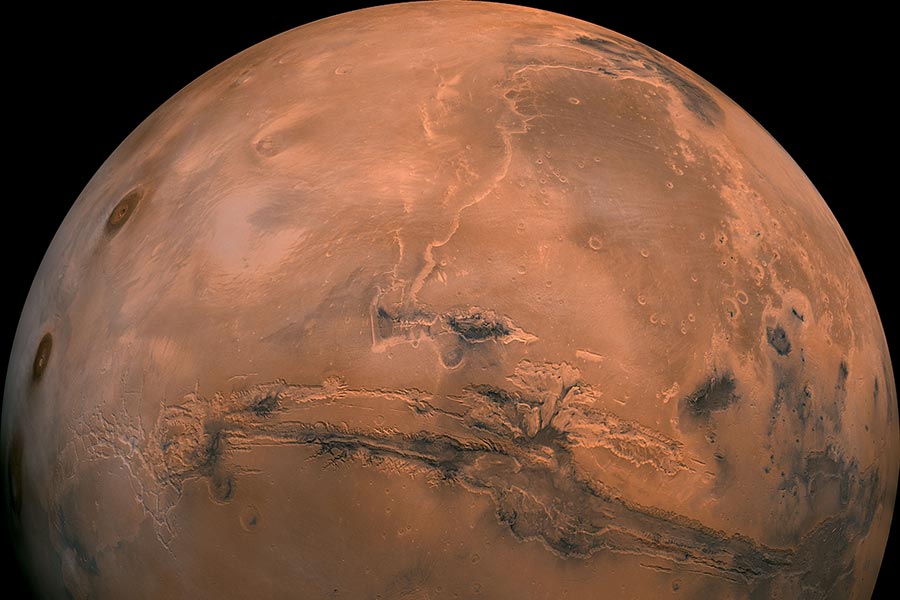
Advertisement
Asteroid mining company Planetary Resource is pleased to announce that some of its core space technologies have passed their tests with flying colors. In a Space.com article, company representatives reported that their Arkyd-6 satellite has accomplished all of its objectives just three months after entering Earth orbit.
Company president and CEO Chris Lewicki said that the spacecraft tested out various systems, all of which performed as designed. The crown jewel was its mid-wave infrared (MWIR) imager, the first commercial model of the instrument to be ever used in space.
Arkyd-6 hitched a ride alongside a number of other satellites aboard an Indian-built Polar Satellite Launch Vehicle, which launched on January 12, 2018. The satellite entered a sun-synchronous orbit, where it can get a steady supply of sunlight for power and always pass over the same spot on Earth at the same time each day.
Built to 6U CubeSat standards in the Redmond, Washington facility, Arkyd-6 is the size of a box of cereals. Despite its small size, it is carrying vital technology that will be used on its much bigger successor, the asteroid prospector Arkyd-301.
Arkyd-6’s fruitful mission bodes well for the future of Planetary Resources and the near-Earth asteroid mining industry. (Related: NASA’s OSIRIS-REX mission will examine samples from an asteroid, seeking clues to the origin of life.)
Satellite successfully tested instrument that will look for water in asteroids
The successful MWIR imager aboard Arkyd-6 is designed to detect the presence of water. A common yet valuable resource on the surface of Earth, water becomes invaluable in space, and not just for drinking purposes by human astronauts.

Electrolysis can be used to split water into its hydrogen and oxygen components. These two elements can be turned into spacecraft propellant. Hydrated minerals that contain water are therefore the first resource that prospector spacecraft – like Planetary Resources’ Arkyrd-301 – will look for in asteroids near Earth.
Mining water from asteroids would enable the construction of off-Earth fuel depots, says pro-asteroid mining groups like Planetary Resources. Spacecraft will be able to refuel from these “gas stations,” greatly increasing their range and endurance.
Easier and reliable access to rocket fuel could result in a boom for spaceflight and space exploration. New spacecraft can be designed and deployed to take advantage of a space-based refueling network.
As part of its test, Arkyd-6 was directed to take images of an Algerian oil refinery. Commercial satellites tasked with this same job would have produced photos of an ordinary installation.
The MWIR imager, however, can detect heat as well as water. Images on the Planetary Resources website show the hot spots generated by the active flame towers of the Algerian refinery well below Arkyrd-6.
Asteroid prospectors will stake out near-Earth asteroids for water and other resources
The next step for Planetary Resources is to build a fleet of Arkyd-301 spacecraft. These are slated for a 2020 launch aboard a single rocket.
Propelled by low-power ion thrusters, each prospector will head towards a near-Earth asteroid. The resource-hunting spacecraft will scan its assigned space rock using the MWIR imager and a number of other instruments.
The Arkyd-301s will also serve as motherships for smaller probes. While the bigger prospector keeps its distance, the probes will dig into the asteroid and sniff out any resources hidden deep within the carbonaceous rock.
The prospecting data collected by the Arkyrd-301s will allow Planetary Resources to identify the most profitable asteroid. It will then design a space mine, launch it towards the chosen space rock, and start extracting water for processing into rocket fuel.
You can dig up more interesting articles about asteroid mining at Space.news.
Sources include:
Submit a correction >>
This article may contain statements that reflect the opinion of the author
Advertisement
Advertisements















